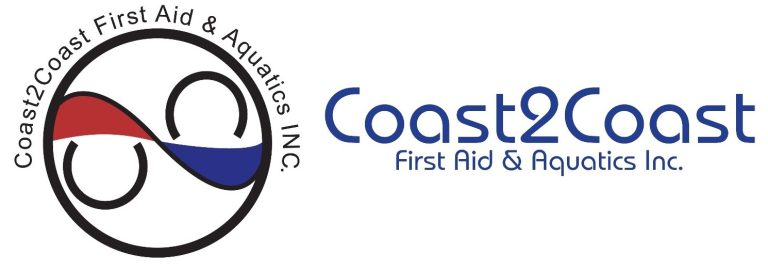The term, “First Aid” refers to the emergency care given to a person who has been injured or has suddenly taken ill. This early response decreases their chances of developing future disabilities and limits the damage done by their current injury or illness.
According to the Workplace Safety & Insurance Board (WSIB) in Ontario, Canada, every workplace must provide a certain level of first aid training to its employees depending on the types and number of hazards present as well as how far away it is from medical assistance.
First Aid training helps prepare you to deal with any emergency effectively and confidently as you follow the required steps. Your role is to assess and treat suspected injuries and illnesses by looking at the signs and symptoms.
1. What is Emergency Scene Management
There is a sequence of events you need to provide as a first aider to ensure everyone, including yourself, is safe, and this is known as Emergency Scene Management (ESM).
The four steps of ESM are Scene Survey, Primary Survey, Secondary Survey, and Ongoing Assistance, and these always follow the same order, no matter the medical emergency.
Scene Survey
As you arrive at the scene, your priority is to ensure your safety as you take charge of the situation. First, check the scene for hazards before entering and use personal protective equipment. If the location is unsafe, don’t enter. Immediately call 9-1-1.
After introducing yourself, ask if you can help and request help from bystanders as needed. In cases where you think the casualty has spinal or head injuries, ensure they don’t move. Next, find out what happened, look for the causes of the injuries and look for other casualties.
Then check everyone for responsiveness to determine their level of consciousness, and if the person is responsive, continue with the ABCs. Otherwise, call 9-1-1.
Once you determine whether the casualty requires emergency medical care, either call 9-1-1 yourself or ask a bystander to do it for you. First, give the bystander all the details and ensure they understand them.
Primary Survey
Now that you have completed the Scene Survey and called for help, it is time to start with the ABCs.
Airway – Check to see if the casualty’s airway is clear by asking them to describe what happened. If the person is unconscious, you must check that their airway is clear and open it.
Breathing – If the person is responsive, ask them how their breathing is. If the casualty is unconscious, constantly check their breathing by doing the head tilt chin lift for 5 – 10 seconds.
Circulation – Here, you need to check several things. First, use an AED or CPR compressions if a patient has breathing difficulties. Next, look for signs of severe bleeding and control it. Also, look at the patient’s temperature and skin color, and look for any unnoticeable injuries by running your hands over their body.
Secondary Survey
Once you have completed the Scene Survey and ABCs, and medical help has not arrived, you need to determine whether to transport the casualty or wait for emergency services by completing a Secondary Survey. During this, if possible, you collect medical history from the casualty and continue assessing and monitoring their ABCs.
Ongoing Assistance
Stay with them until help arrives and continue monitoring and treating them for shock by placing them in the recovery or prone position, reassuring them, and keeping them warm. Additionally, never give anything to eat and drink.
Learn about First Aid & CPR/AED Course you might need
Certify for First Aid & CPR/AED training to assist someone with your life-saving skills as you complete the course with us. Call our toll-free number to know more.
2. What is an Emergency Action Plan?
An Emergency Action Plan requires that you plan, prepare and practice, ensuring you can recognize an emergency, ask if you can help, call emergency medical services (9-1-1), take charge of the situation, or designate others to help you.
Part of the Emergency Action Plan is knowing how to gather a casualty’s medical history, vital signs, and other relevant information about the incident, injuries, and treatment provided. Other aspects of the Emergency Action Plan include having a backup plan in case emergency rescuers can’t come to the scene.
3. How to Prepare For Emergencies
First Aid training is the best way to prepare for emergencies. During the training, you learn everything about treating emergencies caused by injuries and current or existing medical conditions.
During a First Aid training course, you learn everything about scene management, the ABCs, calling emergency medical services, performing CPR, the recovery position, and CPR/AED. But, above all, the invaluable assessment skills that you learn can help you increase a casualty’s likelihood of survival and minimize their suffering by offering the correct treatment for their case.
4. How to Respond to Emergencies
When you arrive at an accident or medical emergency scene, calmly assess the situation and call 9-1-1. If there are bystanders, ask them to help wherever they can while getting information from the casualty.
Don’t forget to:
- Ask if you can help
- Find out what happened
- Ask them how they feel, how their breathing is, and where it hurts
- Gather as much information about them, their past medical history, and the incident
- Take note of their vital signs and the treatment given
5. What are the Legalities Around First Aid?
The Good Samaritan Principles, based on Ontario Bill 20, 2001, give you all the reasons to place any fears of helping others aside. The law takes your side, so use your skill level and common sense to do your best when helping others.
The Good Samaritan Principles include:
- Consent – Always ask permission to assist a conscious casualty, but approval is implied if the casualty is or becomes unconscious. Call 911 if the person refuses, but you are worried about their well-being
- Scope of Training – Use reasonable care when assisting and never exceed your level of training
- Good intention – Your intent must be to help the casualty, not hurt them. As a first aider, you cannot request monetary compensation for your assistance
- Abandonment – There is no legal obligation to help casualties. Still, once you decide to help, you have a moral obligation to continue. People trained as lifeguards, paramedics, etc., have a legal responsibility to assist, but so do you when you are involved in a car accident. If you don’t know how to assist, you must call emergency services. Furthermore, you must help until EMS arrives, unless you can’t carry on because of danger or fatigue.
Finally, expectations dictate you do your best, and First Aid and CPR training provides you with all the skills to do so!
Types of First Aid & CPR Training
The level of training required for First Aid certification varies depending on you or your workplace. For example, depending on your workplace needs or personal interests, you could choose between Emergency or Standard First Aid training.
Emergency First Aid courses only require 8 hours to complete, while Standard First Aid courses need 16, both of which include CPR/AED training. Standard First Aid not only teaches you how to treat more common injuries, but also provides training on additional topics such as head injuries, muscle strains, environmental emergencies, poisons, and sudden medical conditions.
If you want to be even better equipped, you can take Marine or Child Care First Aid courses which will show you how to respond properly in any situation concerning these types of job descriptions and their specific emergencies.
Importance of First Aid & CPR Training
Many people are required to get First Aid Certification for their line of work, school program, or as a safety measure in the workplace. By taking a First Aid course and learning CPR, you will be equipped to save someone’s life in the event of a cardiac emergency. Cardiopulmonary resuscitation (CPR) administered immediately offers patients a greater chance of survival.
A person who learns First Aid at a young age will respond better to emergencies. When children are taught the basics from a young age, they can gradually move on to more advanced training as they grow older.
These confidence and communication-building skills enable young people to develop leadership qualities.By teaching young people to work well under pressure and adapt to difficult environments, we prepare them to be future leaders who can positively influence the world.
Find First Aid Training Near You
Use Coast2Coast’s Registration Guide to find the closest, most convenient location to complete your First Aid training. With Coast2Coast’s Red Cross accredited training professionals, you can get WSIB-approved First Aid & CPR programs in many locations across Eastern and Western Ontario as well as the Greater Toronto Area. After you complete your First Aid Certification, it is valid for three years and can be used in any Canadian province. We would be happy to answer any questions you may have about our First Aid training courses. We would love to have you in our upcoming courses!




















